A guide to the top terminals
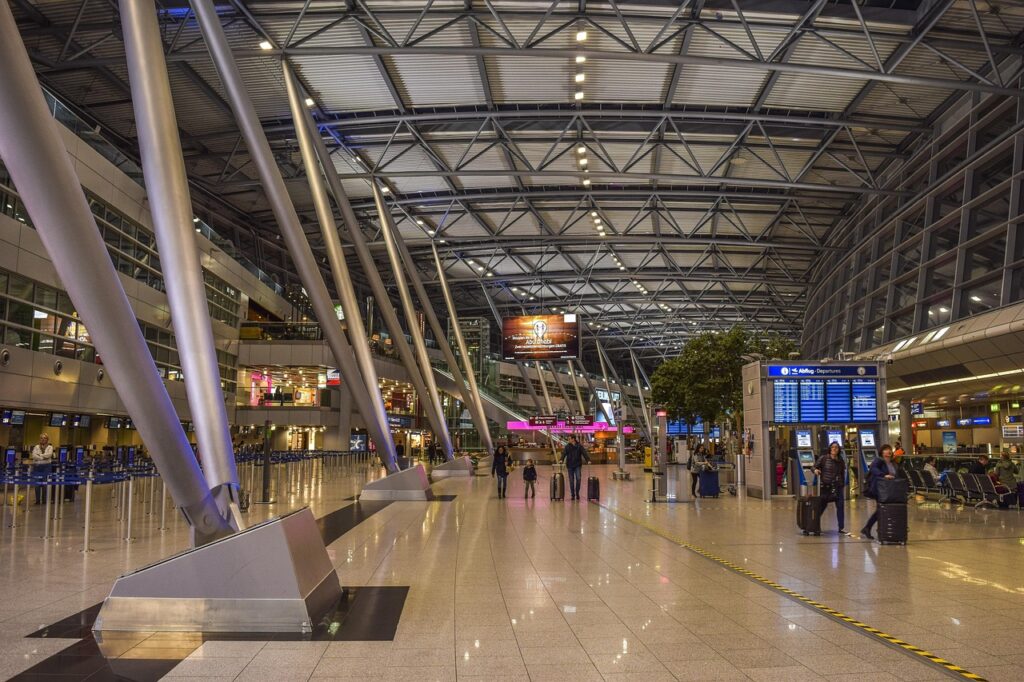
If you find yourself traveling across the United States, airports can be more than just transit points, they can be architectural marvels and cultural showcases worth visiting in their own right. Here are 15 of the most beautiful airports in the U.S. that you should consider exploring if you get the chance.
1. Denver International Airport (DEN), Colorado
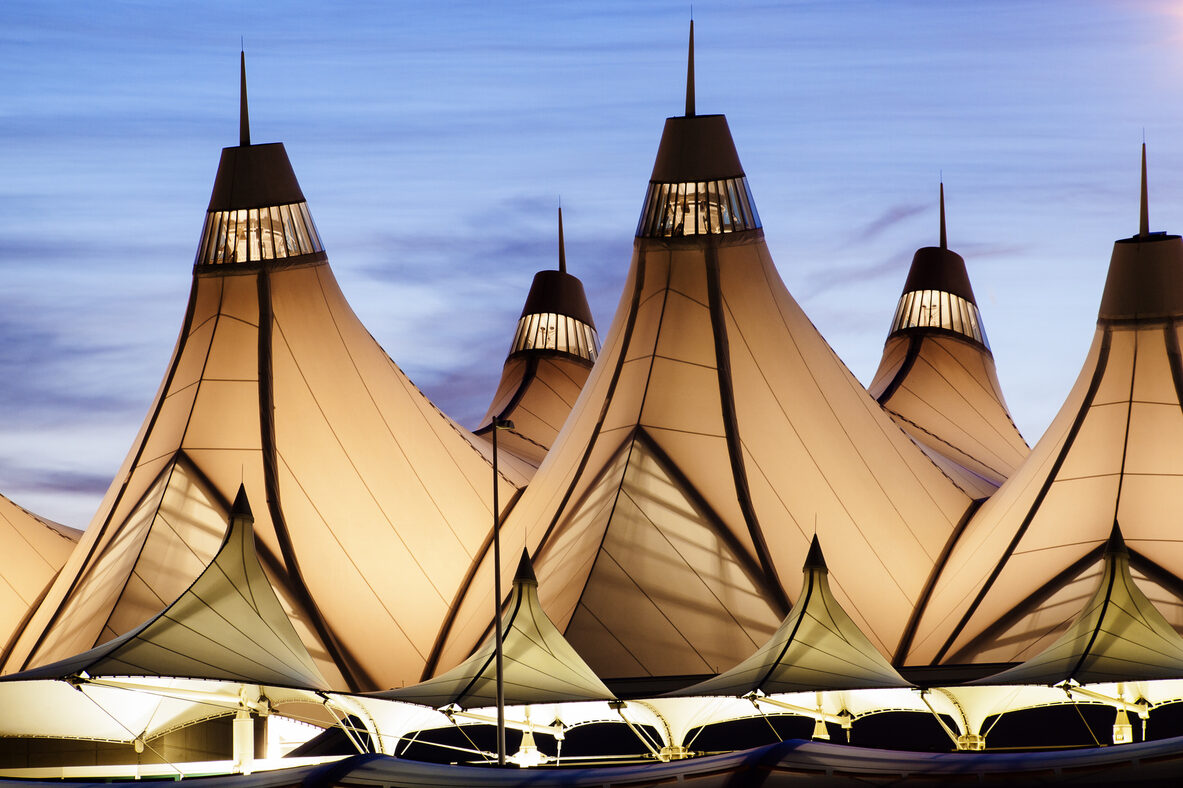
Denver International Airport (DEN) is a well-known and highly acclaimed airport, celebrated for its unique architecture and design. The Jeppesen Terminal’s peaked roof, a signature feature, evokes the imagery of snow-capped mountains and also pays homage to Colorado’s Native American heritage, where teepees once dotted the Great Plains. The airport, designed by Fentress Bradburn Architects, is a key element of its overall appeal. Its extensive public art program features works like Leo Tanguma’s “Children of the World Dream of Peace” and Luis Jiménez’s “Blue Mustang,” a 32-foot-tall bronze sculpture. According to Fentress Architects, the airport’s design has been recognized with numerous accolades, including being named the #1 Best Large Airport by USA Today and being recognized by Travel + Leisure for its design and functionality. The airport is a major economic engine for Colorado, contributing billions of dollars to the state’s economy.
2. San Francisco International Airport (SFO), California
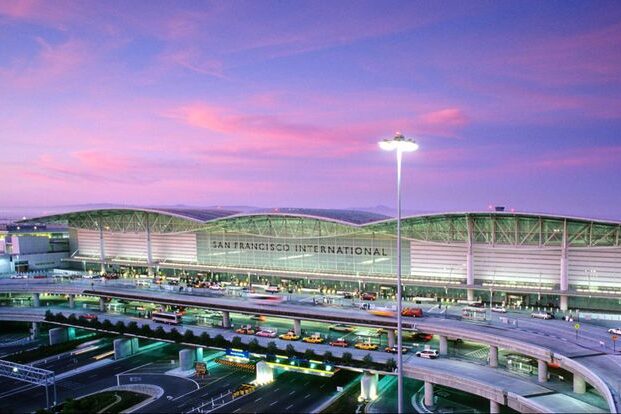
The main airport serving the San Francisco Bay Area is San Francisco International Airport (SFO), located about 12 miles southeast of San Francisco in unincorporated San Mateo County. Despite its San Francisco mailing address, it’s owned and operated by the City and County of San Francisco. SFO is the Bay Area’s largest airport and California’s second-busiest, after Los Angeles International Airport (LAX). In 2023, it ranked 13th busiest in the US and 29th globally by passenger traffic. Newsroom confirmed that the airport is a key hub for United Airlines, serving as its primary gateway to Asia and the Pacific, and also hosts a major maintenance facility. Additionally, SFO is a hub for Alaska Airlines.
3. Portland International Airport (PDX), Oregon
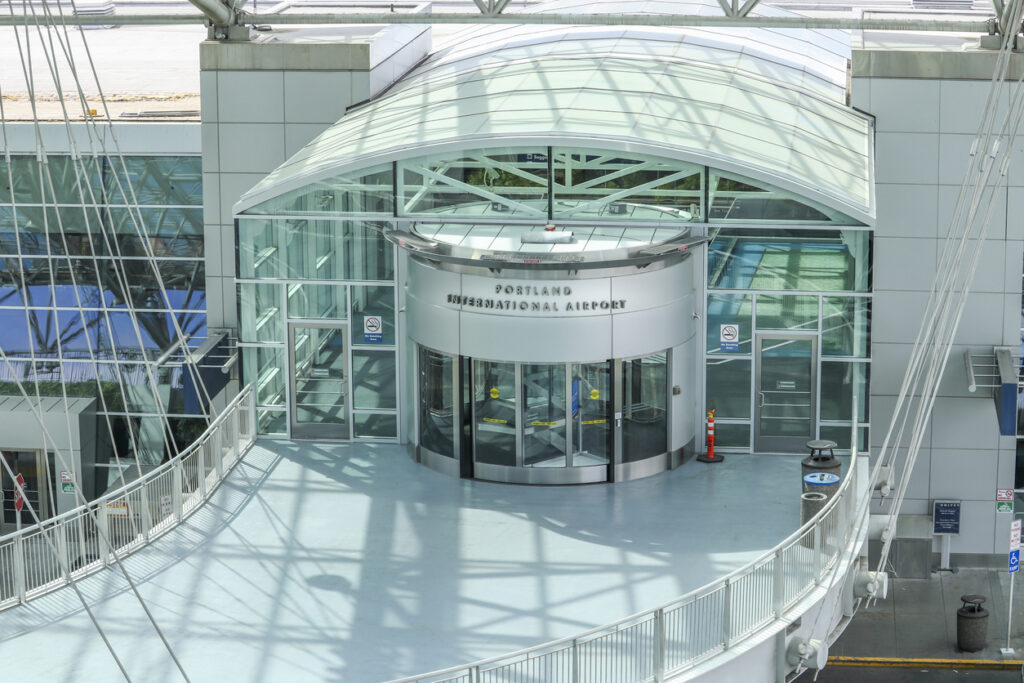
Portland International Airport (PDX) is Oregon’s largest airport, handling 90% of the state’s passenger air travel and 95% of its air cargo. Located 6 miles northeast of downtown Portland, the airport spans 3,000 acres within the city’s limits. PDX offers direct flights to US cities and several international destinations, including Canada, Mexico, and Europe. It’s a hub for Alaska Airlines and features a maintenance facility for Horizon Air. The airport is also home to the Oregon Air National Guard’s 142nd Fighter Wing and has general aviation services provided by Atlantic Aviation. Passengers can reach downtown Portland and surrounding areas via the MAX Red Line light rail or Interstate 205. Creative Guides documents that travelers often praise PDX for its relaxed vibe and efficient layout, making it one of the most pleasant airports to navigate. It’s a place where design meets functionality, reflecting the city’s creative and eco-friendly ethos.
4. Nashville International Airport (BNA), Tennessee
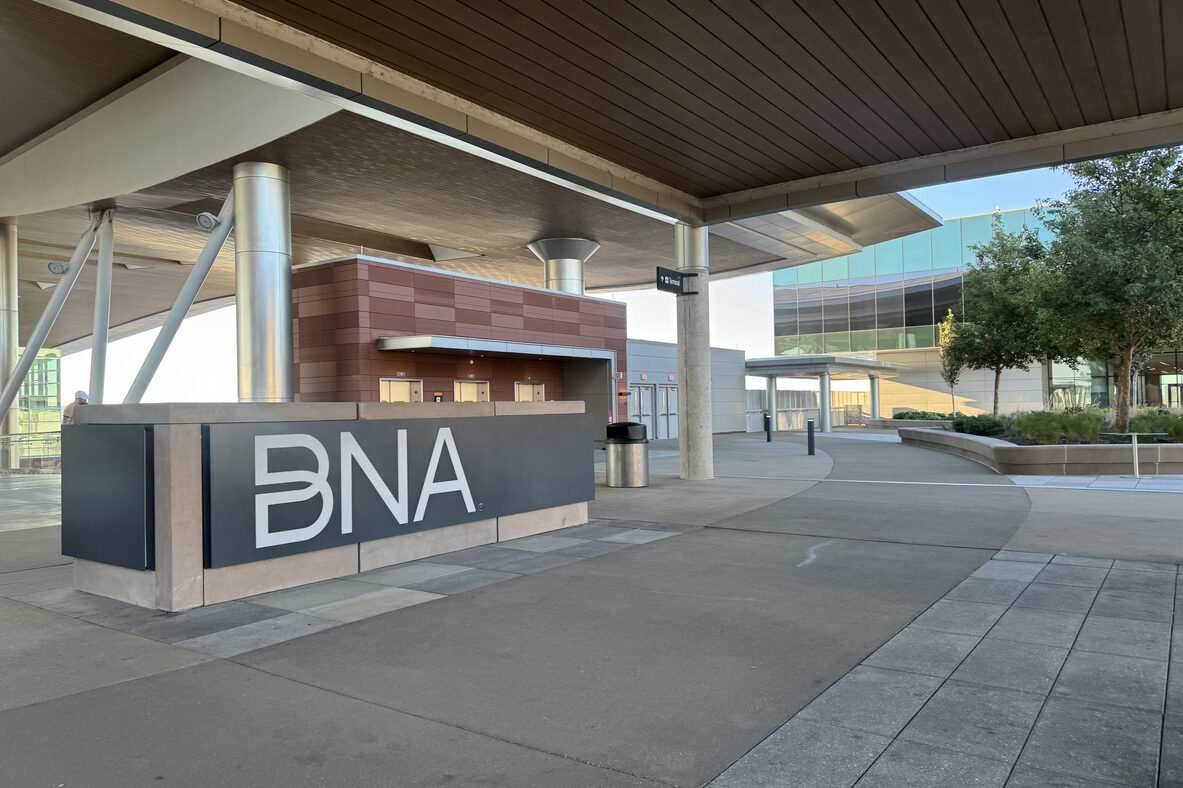
Nashville International Airport (BNA), established in 1937 as Berry Field, is a public/military airport covering 4,555 acres in southeastern Nashville, Tennessee. It’s the state’s busiest airport, offering flights to 99 domestic destinations and several international locations. Initially served by American Airlines and Eastern Air Lines, BNA was once a hub for American Airlines. Today, it averages 600 daily aircraft movements. The airport is also home to Joint Base Berry Field, hosting the 118th Wing and the 1/230th Air Cavalry Squadron Tennessee Army National Guard. BNA’s design creates a vibrant yet comfortable atmosphere, making it a welcoming gateway to Music City. It’s a perfect blend of style and culture that makes your arrival or departure memorable.
5. Minneapolis-Saint Paul International Airport (MSP), Minnesota
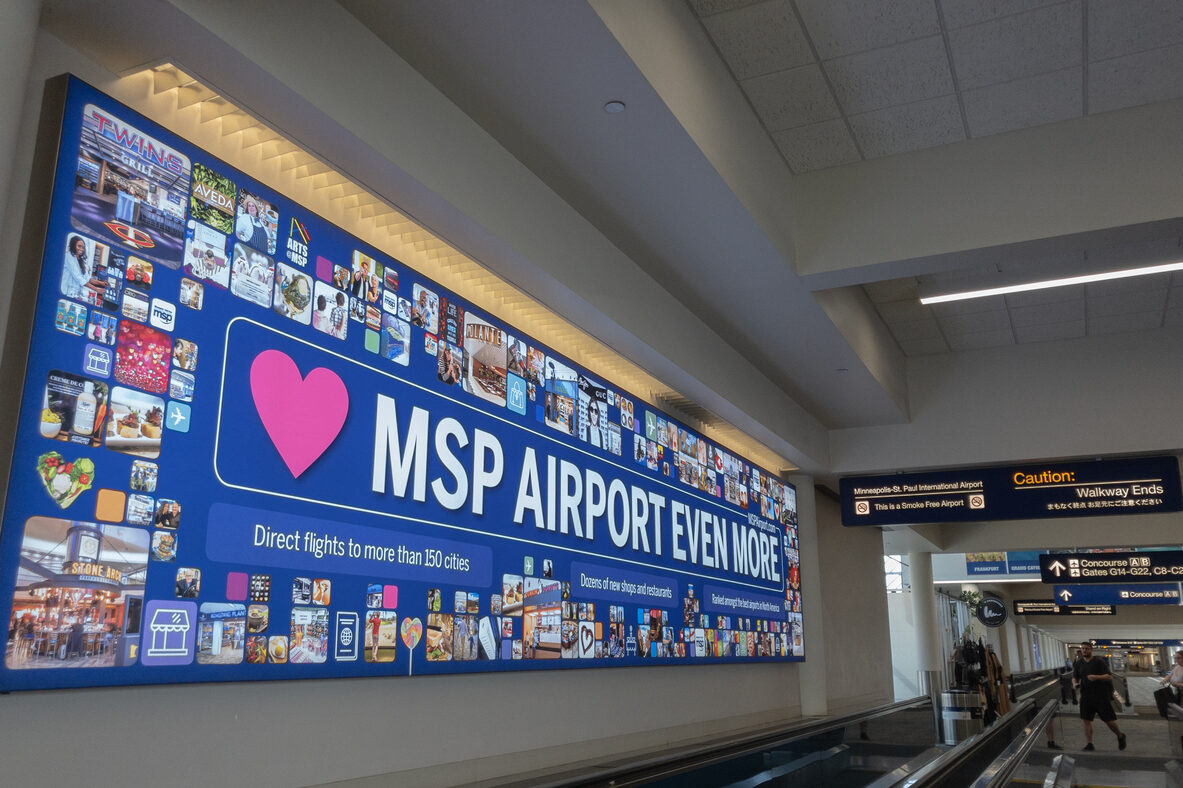
Minneapolis–Saint Paul International Airport (MSP) is a joint civil-military airport serving the Twin Cities in Minnesota, located about 10 miles from both downtown Minneapolis and downtown Saint Paul. The airport is a major hub for Delta Air Lines, accounting for about 70% of its passenger traffic, and is also home to Sun Country Airlines and Endeavor Air, a Delta subsidiary. MSP supports significant military operations, including the Minneapolis–Saint Paul International Airport Joint Air Reserve Station and the 934th Airlift Wing. The airport generates an estimated $15.9 billion annually for the local economy and supports 87,000 workers, covering 2,930 acres of land in Fort Snelling Unorganized Territory. Travelers appreciate MSP for its efficient layout and aesthetic appeal, making it a top choice for those who value comfort and style during their travels.
6. Seattle-Tacoma International Airport (SEA), Washington
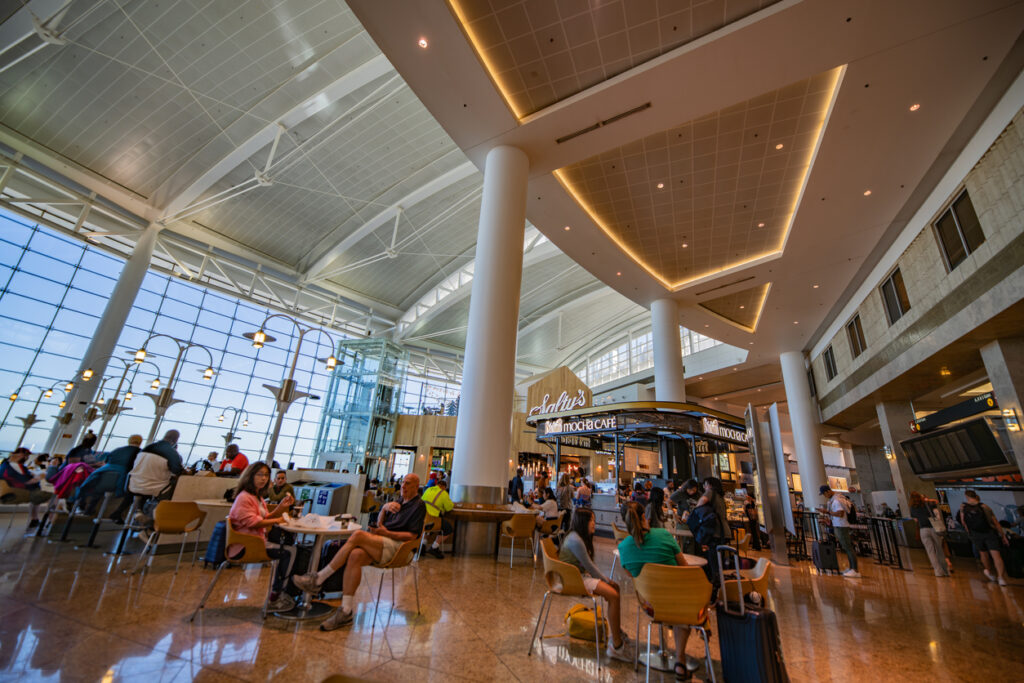
Seattle–Tacoma International Airport (SEA) is the primary airport serving Seattle and Tacoma, Washington, located about 14 miles south of downtown Seattle. Owned by the Port of Seattle, it’s the busiest airport in the Pacific Northwest and a major hub for Alaska Airlines and Delta Air Lines. The airport spans 2,500 acres with three parallel runways and serves 91 domestic and 28 international destinations. After its development in the 1940s, Sea-Tac has undergone several expansions, including a new international arrivals facility that opened in 2022. In 2024, the airport set a record with 52.6 million passengers served. SEA’s design reflects the city’s tech-savvy and nature-loving spirit, offering travelers a glimpse of Seattle’s unique character right from the start.
7. Los Angeles International Airport (LAX), California
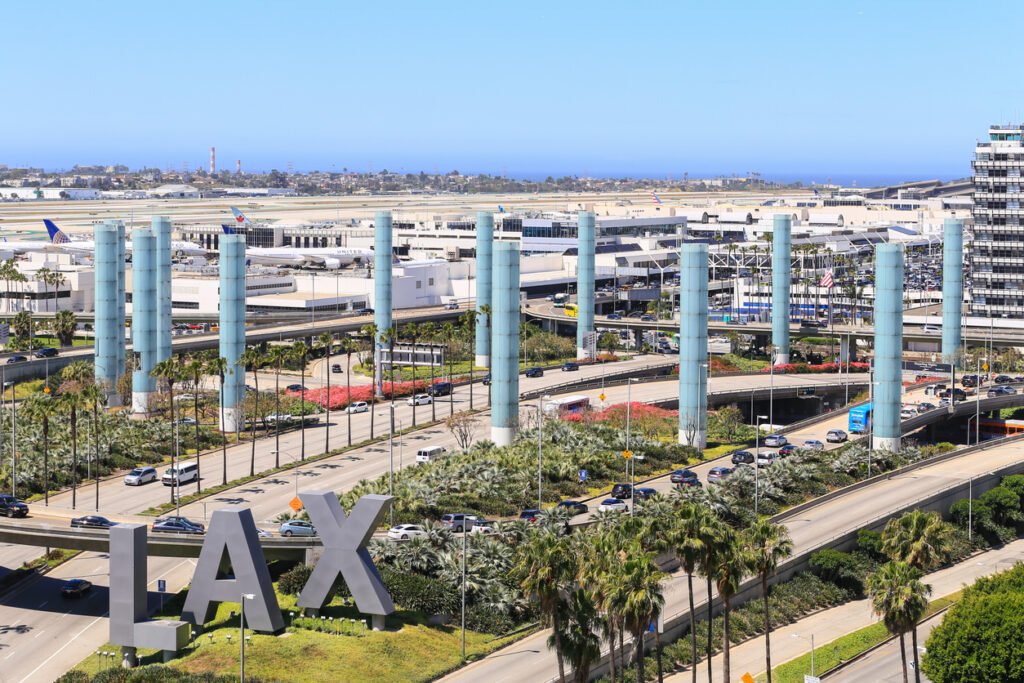
Los Angeles International Airport (LAX) is the primary airport serving Los Angeles, located 18 miles southwest of downtown in the Westchester neighborhood. Operated by Los Angeles World Airports, LAX spans 3,500 acres with four parallel runways and handled 76.6 million passengers in 2024, a 2.04% increase from 2023. As the West Coast’s largest and busiest international gateway, LAX is a major hub for many airlines and holds the record for the world’s busiest origin and destination airport, with around 88% of travelers beginning or ending their trips in Los Angeles. While LAX is a major international hub, its updated design elements make it more inviting and visually interesting for travelers passing through.
8. Tampa International Airport (TPA), Florida
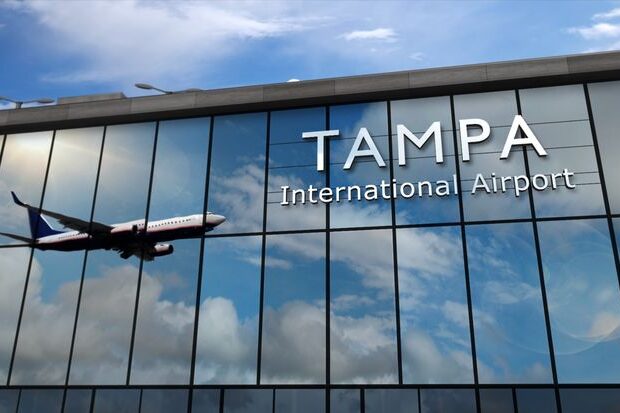
Tampa International Airport (TPA) is a publicly owned international airport located 6 miles west of Downtown Tampa, Florida. Serving 100 non-stop destinations across North America, South America, the Caribbean, and Europe, TPA is operated by the Hillsborough County Aviation Authority. The airport has a rich history, notably being the destination of the world’s first scheduled commercial airline flight, which took place on January 1, 1914, when Tony Jannus flew a Benoist Flying Boat from St. Petersburg to Tampa. Travelers often remark on the airport’s ease of navigation and pleasant ambiance, making it a standout in the Southeast.
9. Dallas/Fort Worth International Airport (DFW), Texas
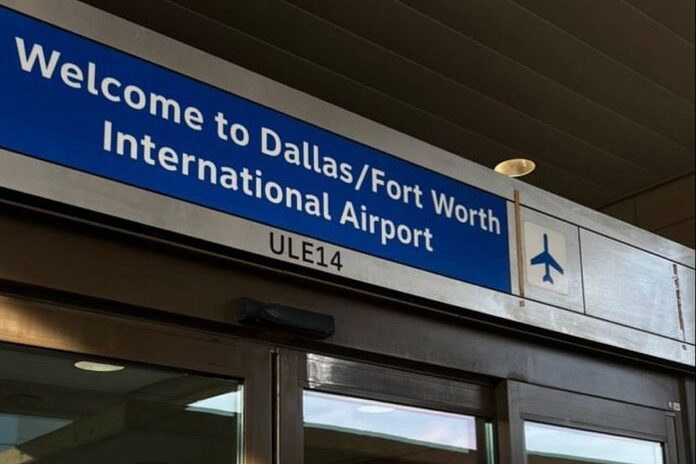
Dallas Fort Worth International Airport (DFW) is a major aviation hub in Texas, serving the Dallas-Fort Worth metroplex and North Texas region. As the largest hub for American Airlines, which is headquartered nearby, DFW is the third-busiest airport globally by aircraft movements and second-busiest by passenger traffic (2022-2023). Spanning 17,207 acres across Dallas and Tarrant counties, including parts of Grapevine, Irving, Euless, and Coppell, DFW is the second-largest US airport by land area. The airport offers flights to 254 destinations worldwide, has its own police, fire protection, and emergency services, and achieved carbon neutral status as the largest airport globally to do so. DFW Airport has been expanding, with ongoing projects expected to continue through 2028, including a $4 billion Terminal F expansion to accommodate more flights. The airport’s blend of scale and style makes it impressive both architecturally and functionally.
10. Salt Lake City International Airport (SLC), Utah
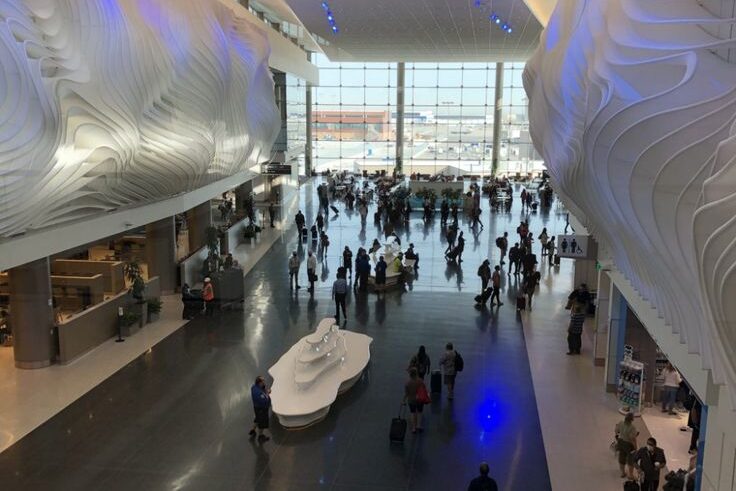
Salt Lake City International Airport (SLC) is a joint civil-military airport located 4 miles west of Downtown Salt Lake City, Utah, serving over 3 million people and nearly 1.3 million jobs within a 30-minute drive. As a hub for Delta Air Lines, SLC offers 343 daily nonstop departures to 93 cities in North America and Europe, making it the busiest airport in Utah. The airport consistently ranks high for on-time departures and arrivals and fewest flight cancellations among major US airports. In 2024, SLC set an all-time record with 28.4 million passengers served, a 5.2% increase from 2023. SLC’s aesthetic and efficient layout make it a pleasant hub for travelers exploring the Mountain West.
11. Boston Logan International Airport (BOS), Massachusetts
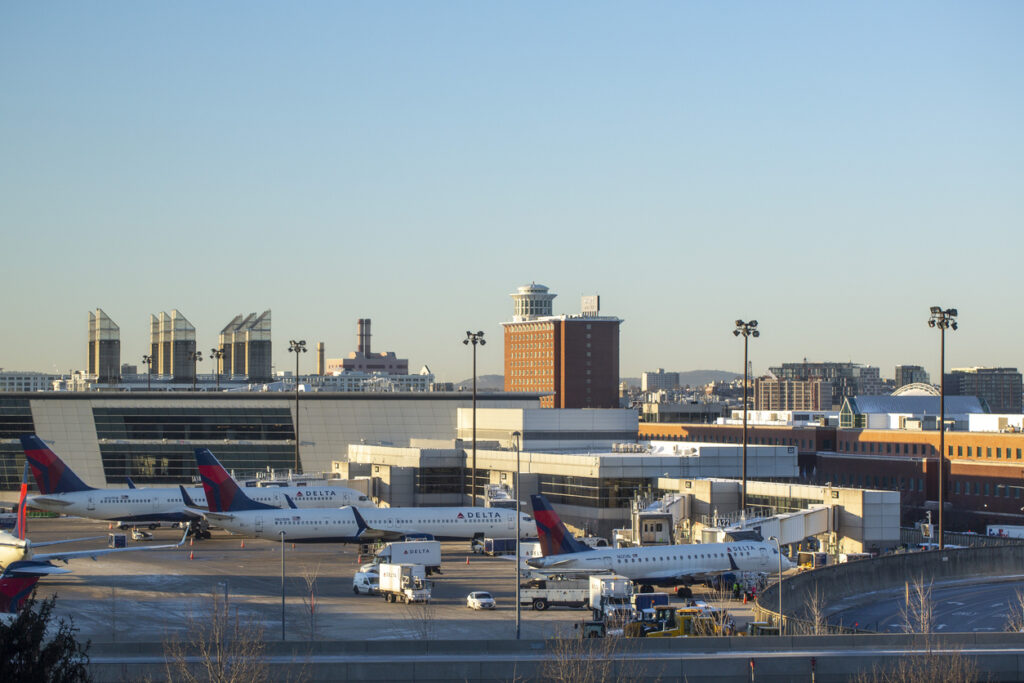
Boston Logan International Airport, named after General Edward Lawrence Logan, is a major aviation hub in Massachusetts, serving as the largest airport in New England and the busiest in the Northeast outside New York. Located in East Boston and Winthrop, the airport spans 2,384 acres with six runways and four terminals, employing around 16,000 people. It handled a record 43.5 million passengers in 2024, offering non-stop flights to over 100 domestic and international destinations via over 40 airlines. Logan Airport is a key hub for several airlines, including Cape Air, Delta Air Lines, and JetBlue, with significant operations by American Airlines and United Airlines. With its rich history dating back to 1923, the airport has undergone significant expansions and now serves as a crucial gateway to the region. Travelers appreciate BOS for its scenic views and cultural touches that make waiting for a flight more enjoyable.
12. Honolulu Daniel K. Inouye International Airport (HNL), Hawaii
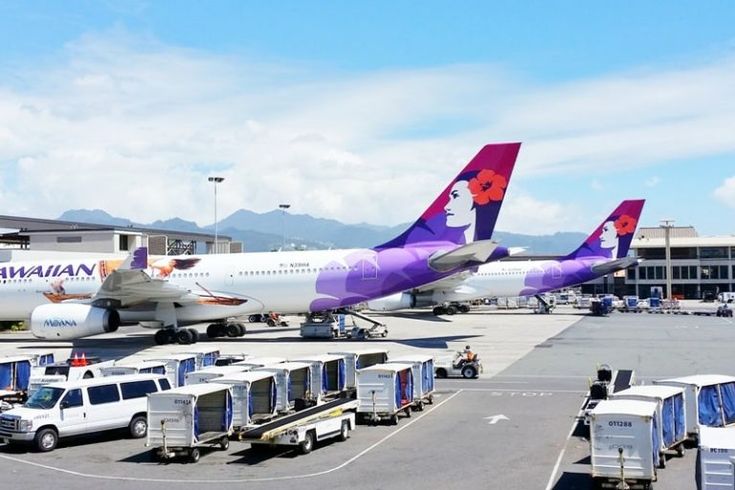
Daniel K. Inouye International Airport, also known as Honolulu International Airport, is Hawaii’s largest airport, located 3 miles northwest of Honolulu’s central business district on 4,220 acres of land. Named after Senator Daniel Inouye, a Medal of Honor recipient and long-serving senator, the airport serves as a major hub for transpacific flights and offers non-stop departures to various destinations in North America, Asia, and Oceania. As the main hub for Hawaiian Airlines and a base for Aloha Air Cargo, the airport handles a significant volume of passengers and cargo, with over 12 million passengers served in 2021. The airport features three terminals, multiple transportation options, and amenities such as free Wi-Fi, lounges, and shopping areas, making it a vital gateway to the Hawaiian Islands. HNL is more than just an airport; it’s a cultural gateway that immerses travelers in Hawaii’s spirit.
13. Chicago O’Hare International Airport (ORD), Illinois
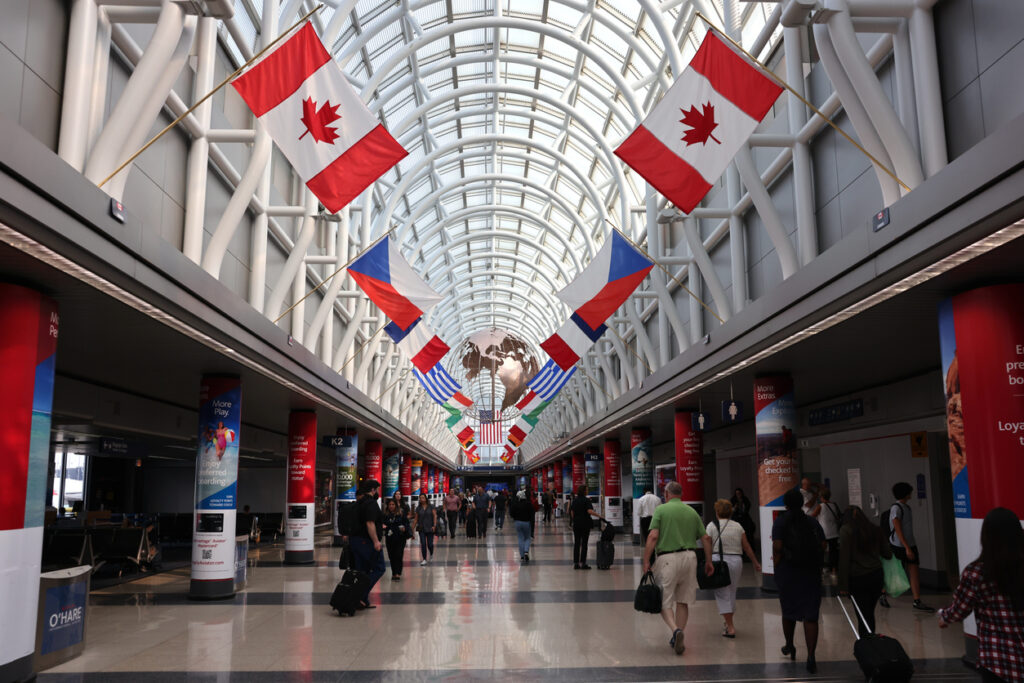
Chicago O’Hare International Airport (ORD) is the primary international airport serving Chicago, Illinois, located 17 miles northwest of the Loop business district. Covering 7,627 acres, it’s operated by the Chicago Department of Aviation and offers non-stop flights to 249 destinations worldwide. As of 2024, O’Hare is the most connected US airport and 5th globally, ranking as the world’s 4th busiest and 16th largest airport. Originally an airfield during World War II, it was later renamed after aviator Edward “Butch” O’Hare and pioneered innovative airport design concepts. O’Hare is a hub for American and United Airlines and an operating base for Frontier and Spirit Airlines, with road access via Interstate 190, airport shuttle, bus, the Chicago “L”, or taxis. ORD’s combination of scale and style makes it a noteworthy airport for architecture and design enthusiasts.
14. Miami International Airport (MIA), Florida
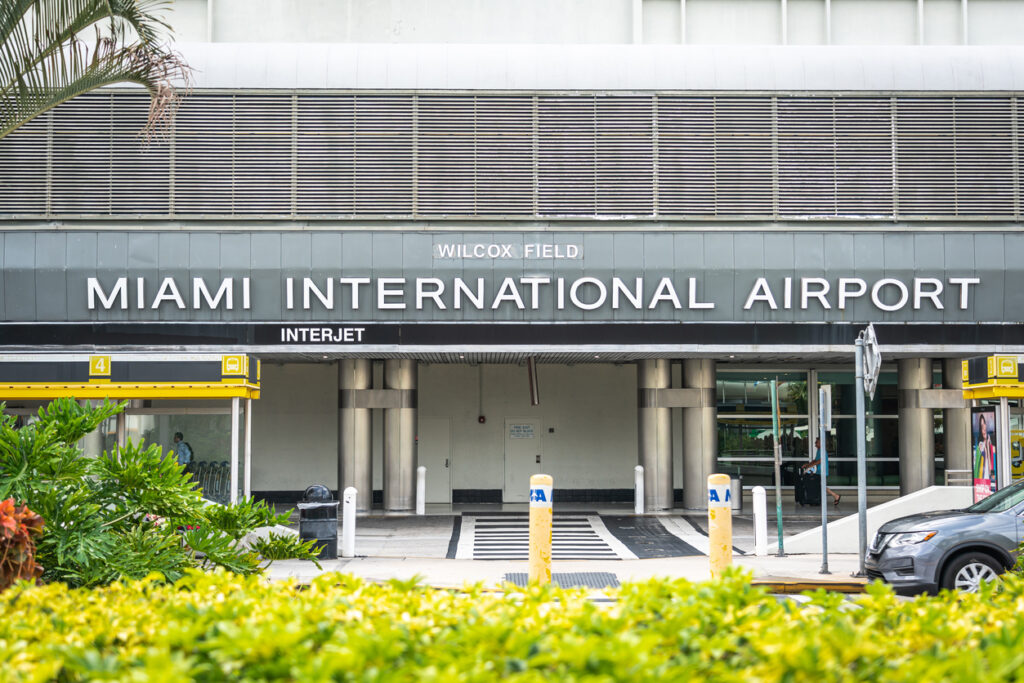
Miami International Airport (MIA) is the primary airport serving Miami and its metropolitan area, hosting over 1,000 daily flights to 185 destinations worldwide. Located 8 miles west-northwest of downtown Miami, it’s a major hub for American Airlines and a focus city for Avianca, Frontier Airlines, and LATAM. As of 2021, MIA is the busiest US international cargo airport and gateway for international passengers, and Florida’s busiest airport by aircraft operations, cargo, and passenger traffic. Covering 3,300 acres, MIA served nearly 56 million passengers and 3 million tons of cargo in 2024, solidifying its role as a key hub for the Southeastern US and gateway to the Americas, Europe, Africa, and Asia. Travelers often find the airport’s aesthetic and cultural touches a refreshing start or end to their journey.
15. Austin-Bergstrom International Airport (AUS), Texas
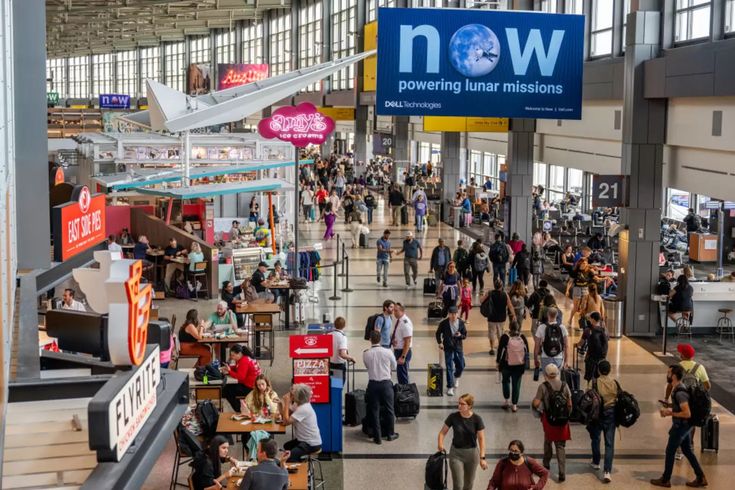
Austin-Bergstrom International Airport (AUS) is a major airport serving the Greater Austin area, located 5 miles southeast of downtown Austin on the site of the former Bergstrom Air Force Base. Covering 4,242 acres, it has two runways and three helipads, and offers over 550 weekly arrivals and departures to 97 destinations in North America and Europe. As the third-busiest airport in Texas and 27th busiest in the US by passenger traffic, ABIA replaced Robert Mueller Municipal Airport in 1999 and continues to grow as a key transportation hub for the region.
The airport’s blend of style and function highlights the city’s unique culture and commitment to sustainability. Exploring these airports can add an unexpected layer of enjoyment to your travels, turning layovers and arrivals into memorable experiences. Next time you fly, consider spending a little extra time soaking in the beauty and culture these airports have to offer. This story 15 Most Beautiful Airports in the U.S. That You Should Visit if You Can appeared first on DailyFetch
If you enjoyed this list, why not share it with fellow travelers or plan your next trip with these stunning airports in mind? Safe travels!


